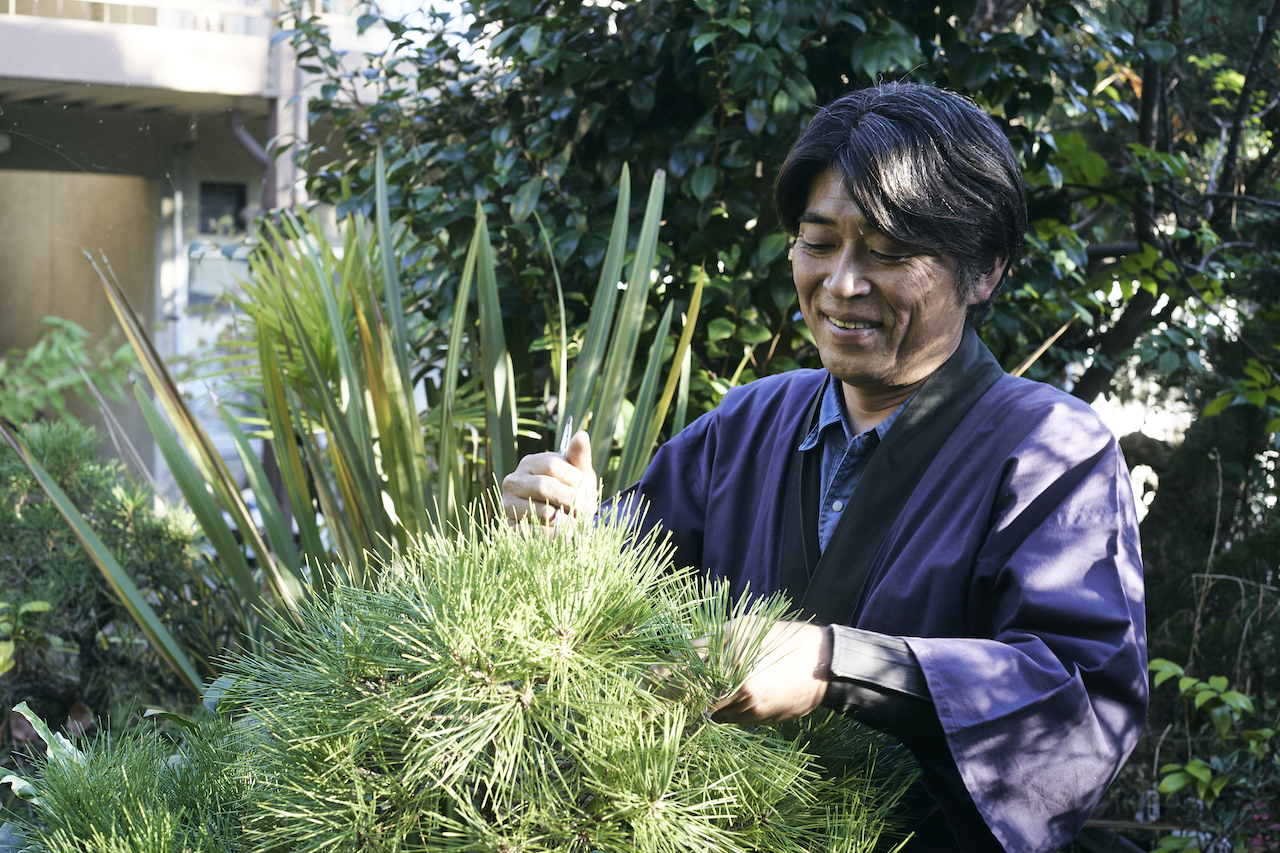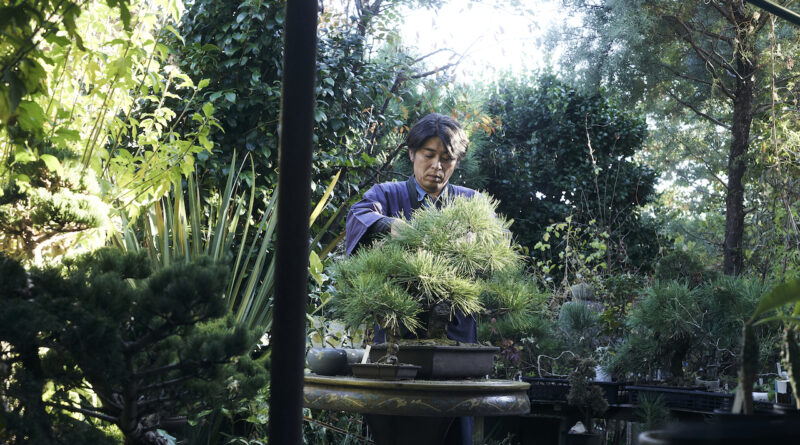Demystifying the living art of bonsai
The Chakuno family have been tending gardens and bonsai for 400 years. Once reserved for the samurai, they are bringing bonsai back down to earth.
The story of a 400-year-old bonsai that had survived the Hiroshima A-bombing of 1945, that was gifted to the USA in 1975 has become some of a minor viral hit, reappearing in social media feeds at regular intervals in recent years. The tree, presented to the U.S. National Arboretum by a bonsai master to commemorate the country’s bicentennial, had been protected from the A-bomb blast by the walls that surrounded a nursery in the western suburb of Koi, about 2.5km from where the bomb exploded.
The Koi district has been a center for plant nurseries and landscape gardening since the gardener to Nagaakira Asano settled here when his Asano was installed as ruler of the Hiroshima region in 1619. The area supplied and tended to the gardens of the Asano clan and their attendant samurai throughout the Edo Period (1600-1868) and some claim that the name by which the art of growing ornamental, artificially dwarfed trees and shrubs in pots, became known around the world, originated in Koi.
Matsutaro Chakuno of Nishiyosikaen is the latest in a long line of a family of landscape gardeners that go back even before the arrival of the Asano clan.

Matsutaro and his wife welcome us to their nursery and company headquarters on a narrow residential street. The nursery is dense with trees and plants, seedlings sprout from pots sat on window ledges and tables.. One in three households used to be involved in gardening in this neighborhood and nearby buildings are surrounded by landscaping equipment. Schoolkids stream along the narrow path, passing by bonsai older than their grandparents. It is easy to picture Matsutaro growing up here, immersed in the culture and business of gardening.

To Matsutaro Chakuno, bonsai is, at its heart, intimately tied to the culture of hospitality. Just as a host might welcome a guest with a bow, bonsai are trained to grow in a way that when viewed from the front, the tree’s “head” appears to be slightly lowered and its “arms” contoured in a gesture of welcome. It was this expression of omotenashi (a somewhat nebulous term that describes Japan’s culture of hospitality) that he hoped to convey to the world with the beautiful bonsai he exhibited at the International Media Center during the G7 Summit, held in Hiroshima in May 2023.
Some of the deeper philosophical aspects of bonsai also seemed appropriate for a gathering at which world leaders paid their respects at Hiroshima’s peace memorial and held talks with Ukranian President Volodymyr Zelenskyy. White parts of the trunk of a bonsai are called shari (bone of the Buddha) and represent one half of the duality of life and death, which cohabit the same tree.

Matsutaro, however, doesn’t dwell much on these deeper themes, however. He is more concerned with how he can lower the barriers to enjoying bonsai to a wider audience. Taking care of bonsai is usually considered a pastime for the elderly, something people take up after retirement. To Matsutaro, this is a wasted opportunity. Bonsai, when taken cared for properly, can live for hundreds of years, so it is far more rewarding to take up the practice earlier in life so that you can “grow up” with your tree, at least until it is time to pass it on, when the time comes for you to return to the earth.
This is one reason he has started offering bonsai workshops. Considering himself a true craftsman, he was at first reluctant to expend valuable time and energy on teaching novices the basics of bonsai. The reactions of his students, however, surprised him. He realized that the workshops not only helped keep the culture of bonsai alive, it provided an opportunity for the participants to engage with nature in a way that they were missing in their daily lives.
As we talk, it becomes clear that Matsutaro is involved in a bewildering array of business and social projects, but, this conversation with nature is at the heart of them. Although the art of bonsai can seem to be the act of bending a tree to your will, he says that he tries not to cause stress to the trees he works with, but to create beauty through a dialogue with them.

Sometimes, of course, bonsai do not outlive their guardians. Working with lacquer master Naoya Takayama to preserve the connection between bonsai and their guardians, across the generations, by transforming lifeless bonsai, into striking pieces of ornamental art. Matsutaro is trying to develop a similar process with Rekiseisha, another local company with a history that goes back to the arrival of the Asano clan, which specializes in working with gold and metal leaf.

Matsutaro has recently attracted attention with his “edible” and “drinkable” bonsai products. Of course, they don’t mean eating and drinking the actual. Bonsai Lager is a craft beer that is made with yeast and extract from the pine cones of local trees. He hopes to piggyback on the popularity of craft beer to insert the idea of bonsai into the heads of people he might otherwise not reach. Similarly, Dora Bonsai are sweet dorayaki cakes, filled with flavors which include one with a gentle pine needle aroma. It may sound a little gimmicky, but Matsutaro assures me that he really put his collaborators through the ringer to make something as delicious as the concept is surprising. I am a craftsman, remember, he says, before adding with a laugh, that his pursuit of quality means that he barely makes a profit on them.
Matsutaro talks with passion about everything he gets his teeth into. He jokes that I will have to stay the night for him to talk about EVERYTHING he is currently working on. I marvel at the contrast of his ebullient enthusiasm, but note how his countenance switches when he dons his work uniform, picks up his tools and continues a conversation with a tree he has been working on. The consummate shokunin, as master craftsmen are described in Japan.

Aware of the world becoming further and further removed from Japan’s traditional craftsmanship and from nature, Matsutaro Chakuno sees continuing the over 400-year legacy he has inherited not only as preserving the family business, but in spreading the word about Hiroshima’s history as not only the site of a tragic historical event, but as a city with a proud history of craftsmanship and greenery.

With his boundless energy, passion for innovation, and desire to work with others we hope to do our part to help Matsutaro Chakuno transmit his message far beyond Hiroshima.
Niwayoshikaen [庭能花園]
December, 2023
Photos: Shota Matono





